Long March – A Walking Visual Display
作品《难民共和国》展在原中华苏维埃中央临时政府前展出-2-400x300.jpg)
Site 1: Ruijin, Jiangxi Province
Long March- A Walking Visual Display
Time: Jun. 28 – Jul. 7, 2002

Site 2: Jinggangshan, Jiangxi Province
Long March- A Walking Visual Display
Time: Jul. 8 – Jul. 12, 2002
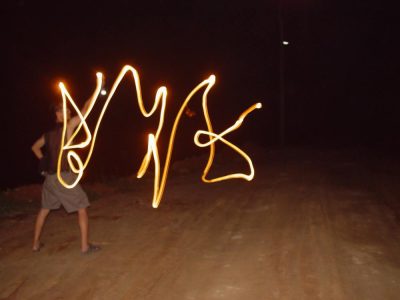
Site 3: Daozhong, Guangxi Autonomous Region
Long March- A Walking Visual Display
Time: Jul. 13 – Jul. 18, 2002

Site 4: Kunming, Yunnan Province
Long March- A Walking Visual Display
Time: Jul. 21 – Jul.22, Aug. 2 – Aug.5, 2002

Site 5: Lijiang, Yunnan Province
Long March- A Walking Visual Display
Time: Jul. 23 – Jul. 27, 2002
Jul. 31 –Aug.01,2002
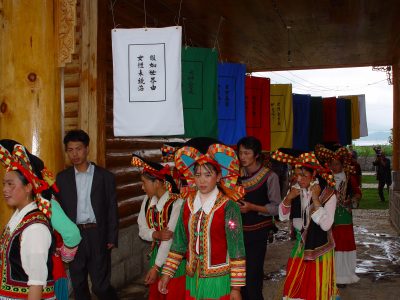
Site 6: Lugu Lake, Yunnan/Sichuan Provinces
Long March- A Walking Visual Display
Time: Jul. 27 – Jul. 30, 2002

Site 7: On the Train between Kunming and Zunyi
Long March- A Walking Visual Display
Time: Aug. 6, 2002
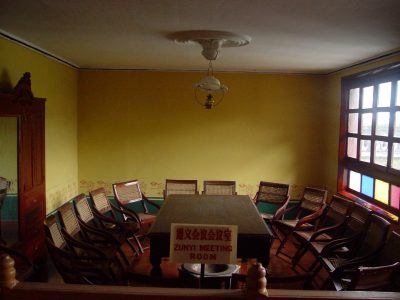
Site 8: Zunyi, Guizhou Province
Long March- A Walking Visual Display
Time: Aug. 7 – Aug. 12, 2002

Site 9: Maotai, Guizhou Province
Long March- A Walking Visual Display
Time: Aug. 13 – Aug. 15, 2002
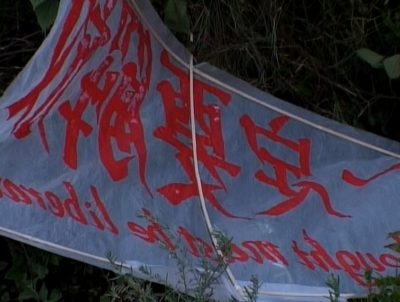
Site 10: Xichang Long March Satelite Station, Sichuan Province
Long March- A Walking Visual Display
Time: Aug. 16 – Aug. 21

Site 11: Moxi, Sichuan Province
Long March- A Walking Visual Display
Time: Aug. 22 – Aug. 27, 2002
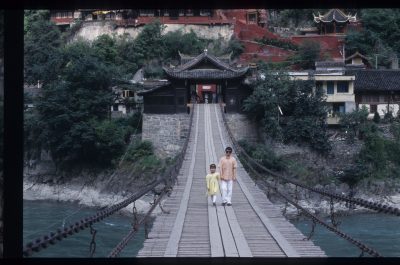
Site 12: From Anshunchang to Luding Bridge
Long March- A Walking Visual Display
Time: Aug. 28 – Sep. 1, 2002
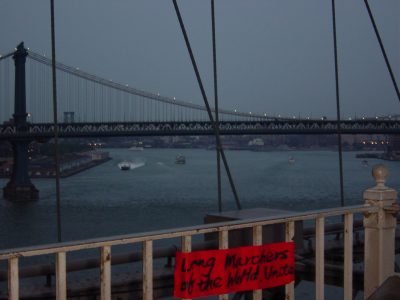
Works made along the Long March
Long March- A Walking Visual Display
Time: 2002
Artists: Qu Guangci, Qiu Zhenzhong, Song Dong, Yin Xiuzhen, Wang Bo, Qin Ga, Qiu Zhijie, Ingo Günther, Jiang Jie, Wang Jingsong, Yao Ruizhong, Shao Yinong, Mu Chen, Xiao Lu, Shen Meng, Xiao Xiong, Ding Jie
Site 1: Ruijin, Jiangxi Province
Long March- A Walking Visual Display
Time: Jun. 28 – Jul. 7, 2002
Curatorial Plan:Revisit the roots/origins of Marxism, Trotskyism and the Chinese Communist Revolution in terms of their internationalist ideals and new contributions.
Time: June 28 - July 7
July 2 to 5: Ruijin
"Discussion on Revolutionary Paintings" was held in the Ruijin Youth Cultural Palace
Li Tianbing and his son exhibited their works at the site of the former Central Post Office.
The Exhibition of Works by Ruijin Photographers’ Association opened in Red Square
“Qu Guangci” arrived in Ruijin
Exhibition of the Works by Ruijin Calligrapher Association was held in the Ruijin Cultural Center
July 6, Jiu Bao Town
Evening Screening in Mixi Village

作品《难民共和国》展在原中华苏维埃中央临时政府前展出-2.jpg)
On June 28th, the Long March’s curatorial team boarded a T106 train from Beijing headed for Ganzhou. The preparation for various projects began immediately after the arrival in Ruijin on the 29th, marking the official commencement of the Long March Project. Sculpture works by Zhan Wang, Fu Xinming and others had already arrived at the Yeping Revolutionary Memorial site, and were waiting to be unpacked. Joining the march from Fujian province, the photographer father and son, Li Tianbing and Li Jincheng, started installing their exhibition. Local organizations, including the Ruijin Municipal Party Committee of Propaganda, the Cultural Associations and Bureaus all showed enthusiastic support for the project. The four Associations of Artists, Calligraphers, Musicians and Dancers under the Cultural Bureau had each proposed a program for the Long March.
Simultaneously, projects initiated by Qiu Zhenzhong, Shi Yong, Song Dong, Yin Xiuzhen, Wang Bo, Qu Guangci, and Wang Jinsong, were to continue to evolve throughout the entire Long March Project, without the actual presence of the artists.
Xiao Xiong, Shao Yinong, Mo Chen, and others planned to depart soon for their own Long March, traveling a different route from the main contingent.
"Discussion on Revolutionary Paintings" was held in the Ruijin Youth Cultural Palace
July 2
The Red Earth: Discussion on Revolutionary Paintings was co-organized by the Artists’ Association of Ruijin and the Long March curatorial team in the Ruijin Youth Cultural Palace. Prints and oil paintings of historical and revolutionary subject matters created by artists of the Ruijin Artists’ Association were exhibited. Juxtaposed with these works were reproductions of Chinese ink paintings portraying the scenery along route of the Long March, which the curatorial team had brought over to Ruijin.
Ten directors from the Artists’ Association joined the discussion. The chairman of the local Artists’ Association gave a detailed introduction about the making of the mural in the Ruijin Hotel, entitled The Dawn of the Red Capital. His introduction was followed by a fervent discussion among all participants about the relationship between the revolutionary subject and the professional requirements of such a painting itself. During the discussion, every participant recalled important historical documents, such as the Yan’an Talks on Literature and Art by Chairman Mao, and Why I Joined the Communist Party by Picasso.
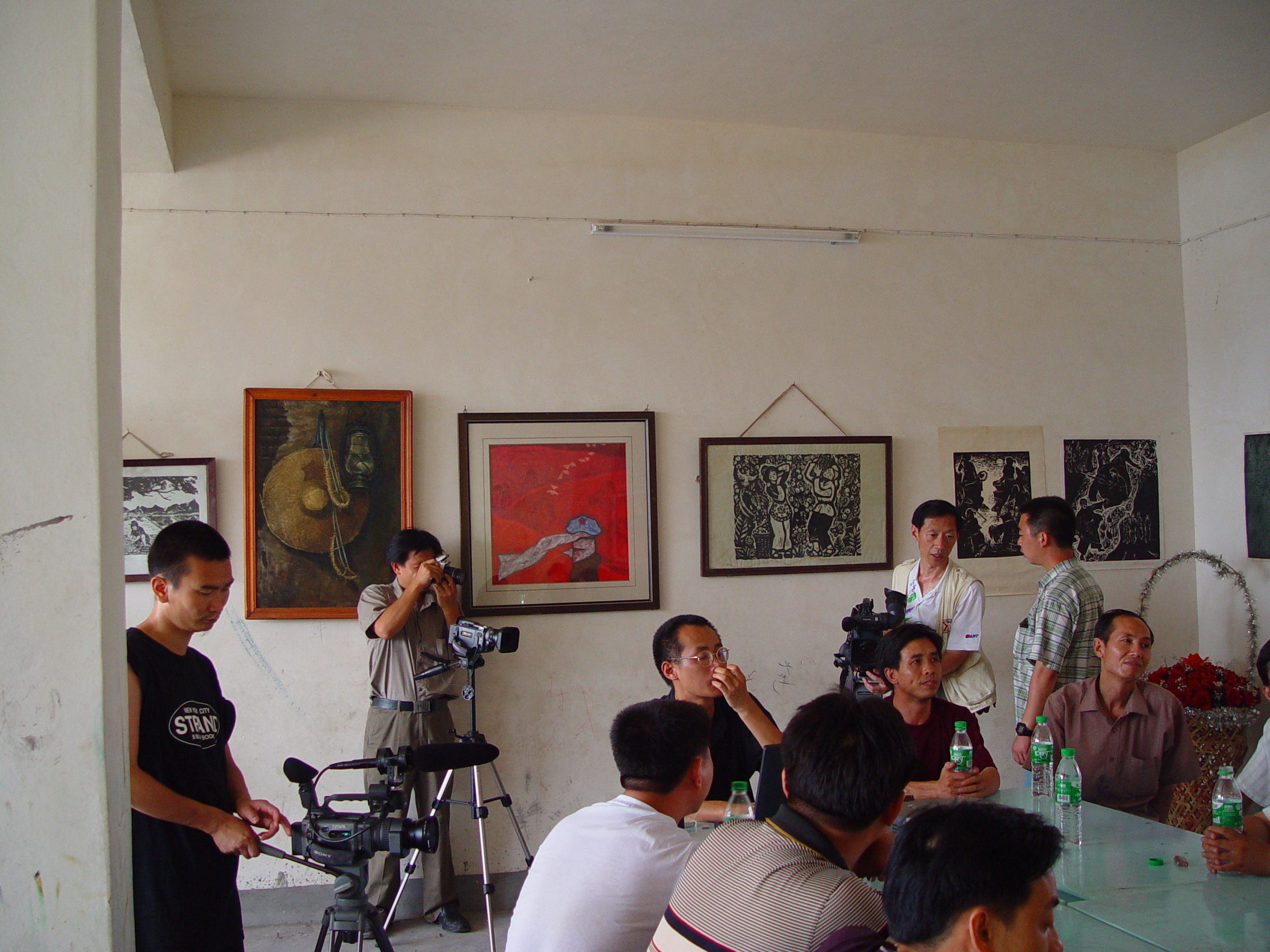
Li Tianbing and his son exhibited their works at the site of the former Central Post Office.
July 3
Li Tianbing and Li Jincheng exhibited their works at the site of the former Central Post Office. Tourists visiting the Yeping Memorial showed deep interest in the unique old-fashioned photography methods employed by Li Tianbing, who was asked repeatedly for his autograph. Afterwards, the photographer held an on-site photo shoot, generating a lot of enthusiasm among onlookers.
.jpg)
The Exhibition of Works by Ruijin Photographers’ Association opened in Red Square
July 4
The Exhibition of Works by Ruijin Photographers’ Association opened outdoors in Red Square, the busiest section of Ruijin town. More than one hundred pieces, reflecting urban construction and local customs and scenery, were on exhibit. Li Tianbing and Li Jincheng made a visit to the exhibition space. In the afternoon, local photographers also visited the Yeping Memorial to view their works, leading to an enthusiastic and warm exchange between local hosts and visitors.
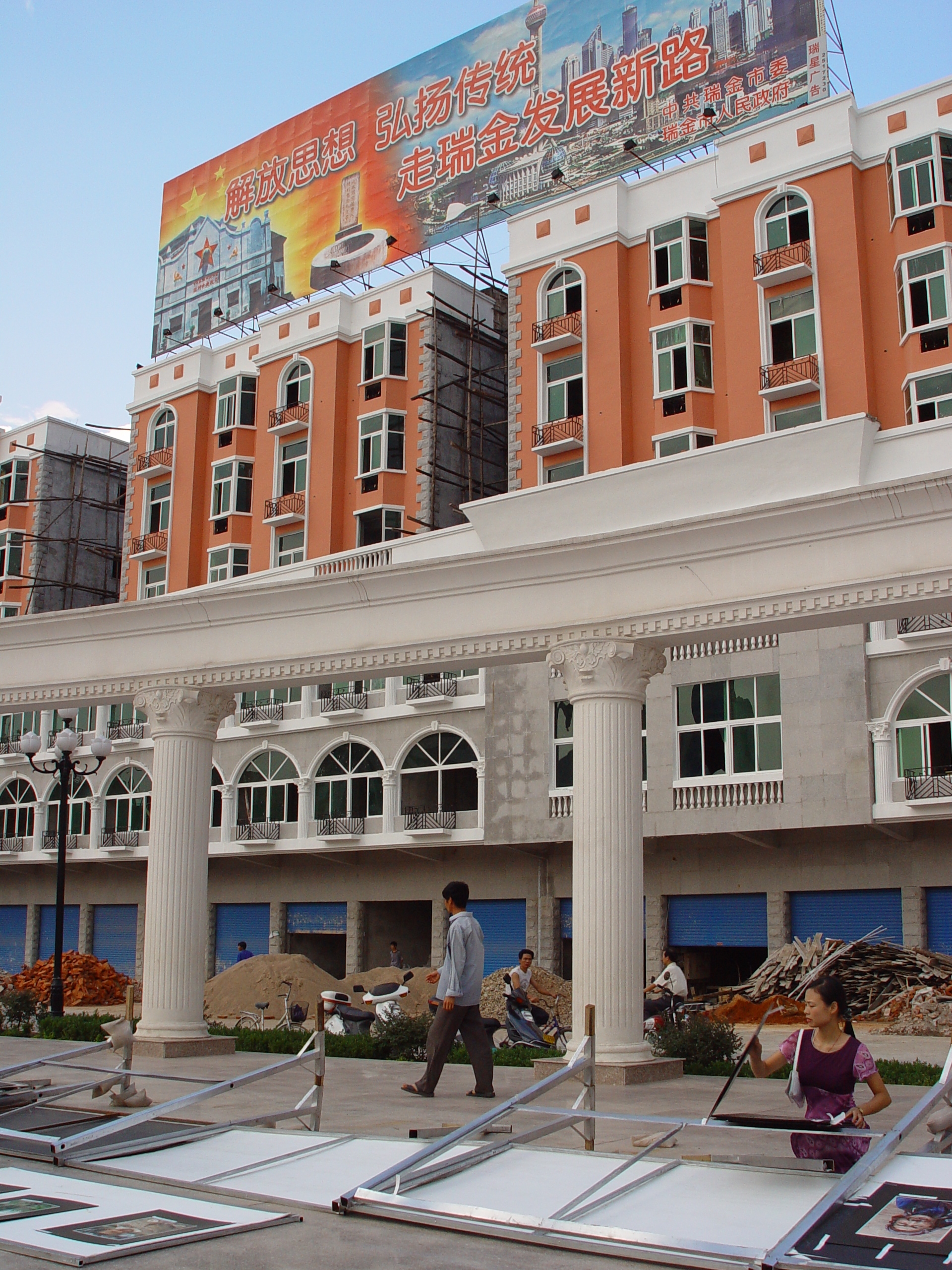
Assuming the name “Qu Guanci,” the executor of the project Who is the Third Party?, proposed by the Shanghai-based artist Qu Guanci, reported his arrival in Ruijin to the main contingent. Employed by Qu Guanci, and using his identity, this individual will continue to appear during the whole process of the Long March. According to the contract between them, “Qu Guanci” will carry a soft sculpture figure of the real Qu Guanci, keeping it close to him for the duration of the march. He will also be responsible for carrying out another work by Qu Guanci entitled The Model of the New Long March. In addition, the organizing committee has assigned “Qu Guanci” to assist in Qiu Zhenzhong’s work Signature as well as works by Song Dong and Yin Xiuzhen.
Along the route of the Long March, he will try his best to collect as many signatures as possible from various people. Qiu Zhenzhong will turn the collected signatures into a work in the end.
At every site, “Qu Guanci” will also be searching for an individual suitable for Song Dong’s project by taking pictures of their face with a Long March brand automatic camera. These rolls of film will be collected afterwards by Song Dong, who will then complete the work. “Qu Guanci” will also be responsible for collecting used clothing for Yin Xiuzhen.
Exhibition of the Works by Ruijin Calligrapher Association was held in the Ruijin Cultural Center
July 5
In the exhibition hall of the third floor of the Ruijin Cultural Center, The “Three Nine” Exhibition of the Ruijin Calligraphers Association, an art event of the Long March organized in cooperation with a local organization, opened in grand-style. Many of the contents of the works on exhibit related to the Long March. The comrades of the Ruijin Municipal Party Committee of Propaganda and the Cultural Bureau visited the exhibition and participated in Qiu Zhenzhong’s Signature project, signing their names enthusiastically with a brush.
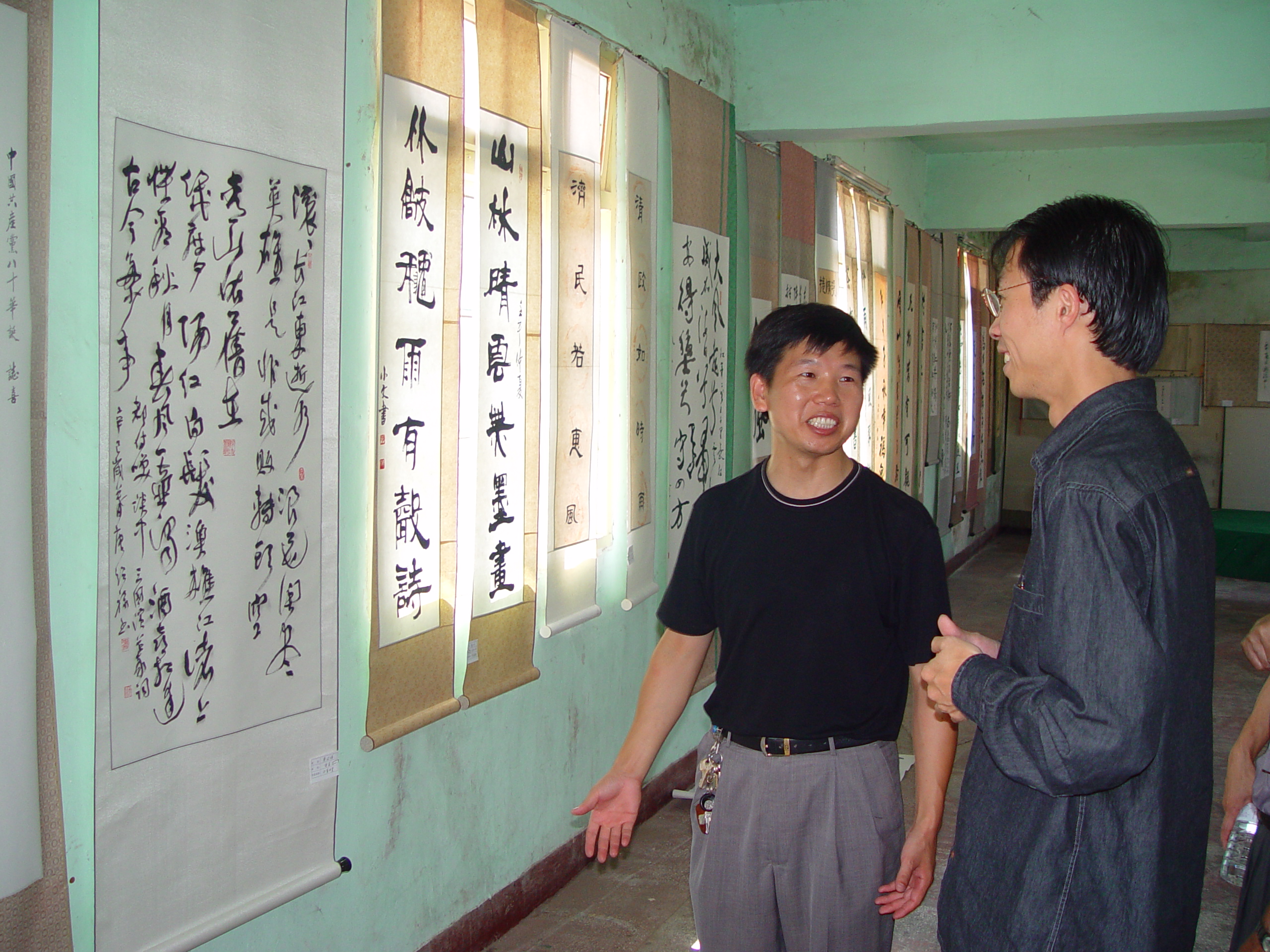
The curatorial crew went 35km away from Ruijin City to Mixi Village in the mountains, the habitats of Hakka Luo’s Clan. It was said that the local people hadn’t had any chance to watch movies for more than 5 years.
At that night, the Long March team played La Chinoise by French director Godard and several contemporary works, e.g. Lao Jiang’s animation Rock n’roll on the New Long March, the video work Inflation by Liang Juhui, Hong Hao’s New World Map Series and Ingo Gunther’s map series, and explained the relationship between the word Refugee and Hakka.
The local people was especially impressed by the French literati’s attempt in the late 60s imitating Chinese revolutionary spirit shown by Godard’s film.
Curatorial Plan:Revisit the roots/origins of Marxism, Trotskyism and the Chinese Communist Revolution in terms of their internationalist ideals and new contributions.
Time: June 28 - July 7
July 2 to 5: Ruijin
"Discussion on Revolutionary Paintings" was held in the Ruijin Youth Cultural Palace
Li Tianbing and his son exhibited their works at the site of the former Central Post Office.
The Exhibition of Works by Ruijin Photographers’ Association opened in Red Square
“Qu Guangci” arrived in Ruijin
Exhibition of the Works by Ruijin Calligrapher Association was held in the Ruijin Cultural Center
July 6, Jiu Bao Town
Evening Screening in Mixi Village
作品《难民共和国》展在原中华苏维埃中央临时政府前展出-2.jpg)
"Discussion on Revolutionary Paintings" was held in the Ruijin Youth Cultural Palace
July 2
The Red Earth: Discussion on Revolutionary Paintings was co-organized by the Artists’ Association of Ruijin and the Long March curatorial team in the Ruijin Youth Cultural Palace. Prints and oil paintings of historical and revolutionary subject matters created by artists of the Ruijin Artists’ Association were exhibited. Juxtaposed with these works were reproductions of Chinese ink paintings portraying the scenery along route of the Long March, which the curatorial team had brought over to Ruijin.
Ten directors from the Artists’ Association joined the discussion. The chairman of the local Artists’ Association gave a detailed introduction about the making of the mural in the Ruijin Hotel, entitled The Dawn of the Red Capital. His introduction was followed by a fervent discussion among all participants about the relationship between the revolutionary subject and the professional requirements of such a painting itself. During the discussion, every participant recalled important historical documents, such as the Yan’an Talks on Literature and Art by Chairman Mao, and Why I Joined the Communist Party by Picasso.
The curatorial crew went 35km away from Ruijin City to Mixi Village in the mountains, the habitats of Hakka Luo’s Clan. It was said that the local people hadn’t had any chance to watch movies for more than 5 years.
At that night, the Long March team played La Chinoise by French director Godard and several contemporary works, e.g. Lao Jiang’s animation Rock n’roll on the New Long March, the video work Inflation by Liang Juhui, Hong Hao’s New World Map Series and Ingo Gunther’s map series, and explained the relationship between the word Refugee and Hakka.
The local people was especially impressed by the French literati’s attempt in the late 60s imitating Chinese revolutionary spirit shown by Godard’s film.
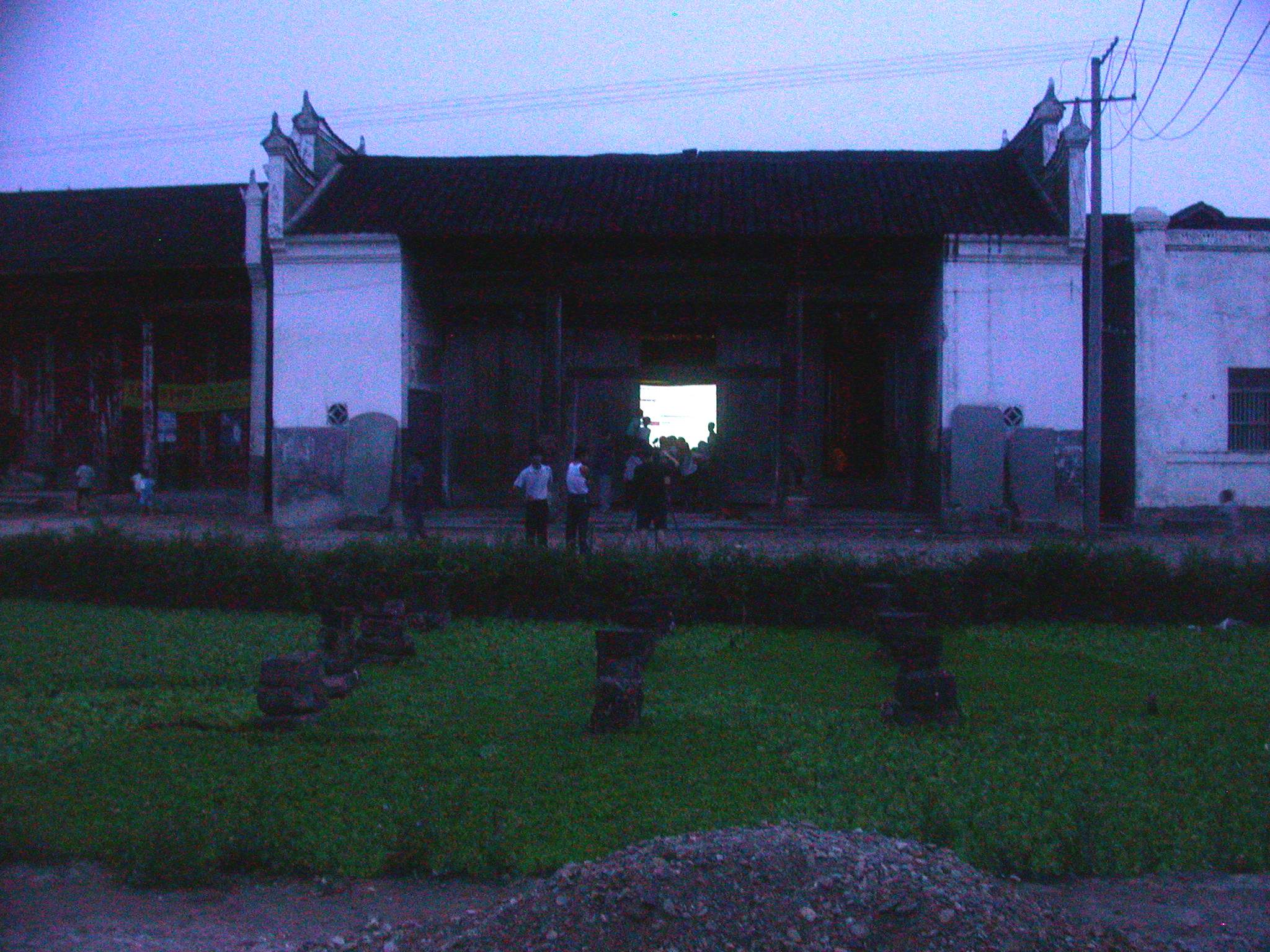

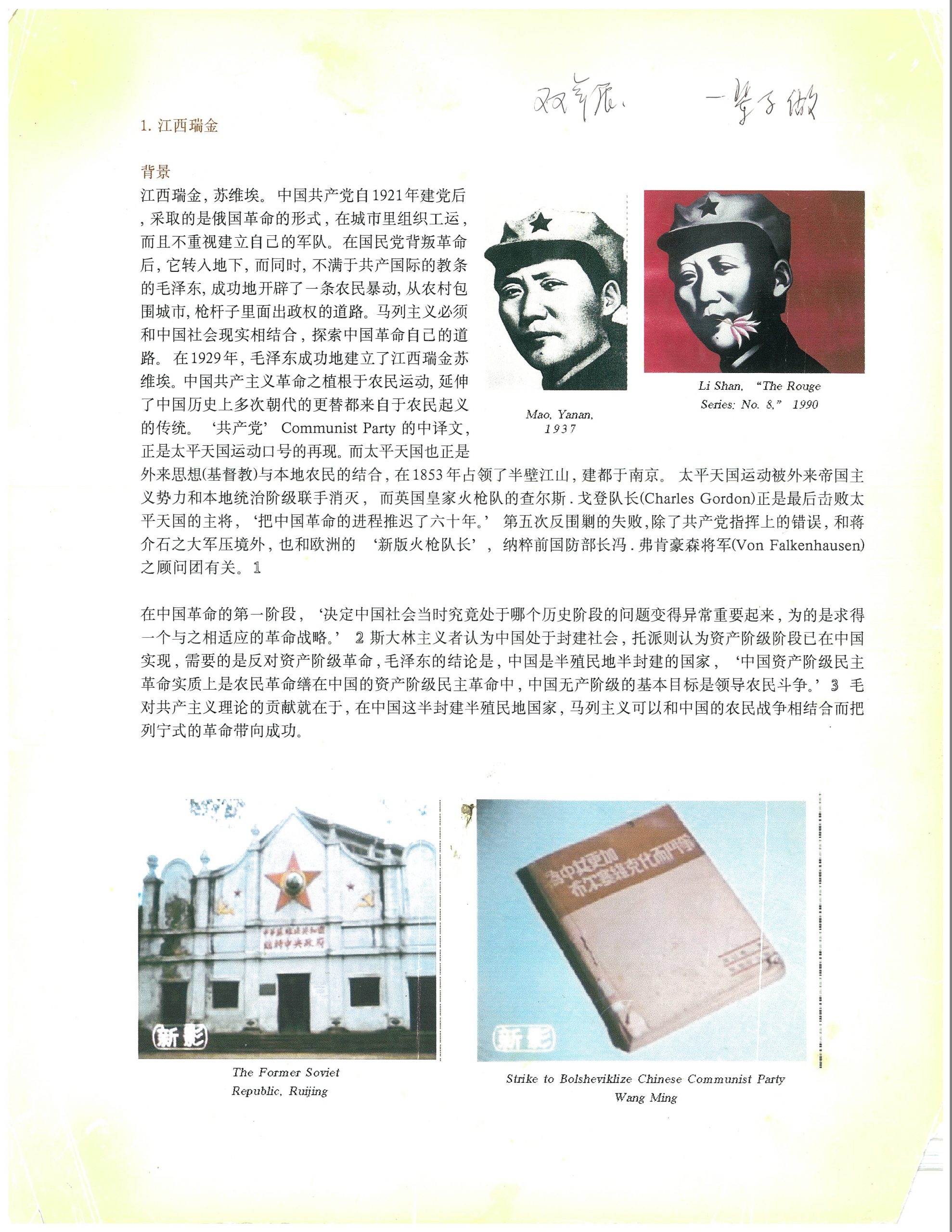

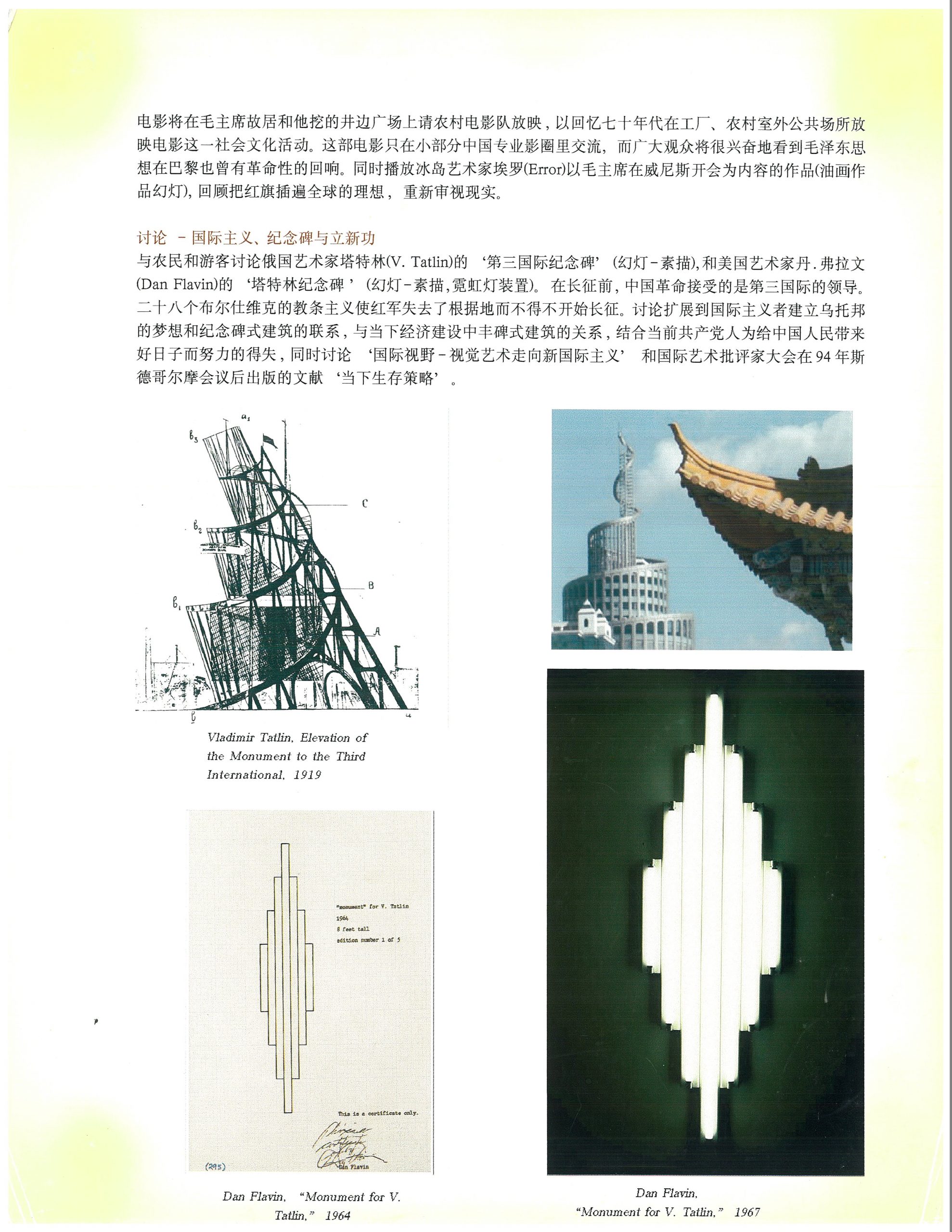
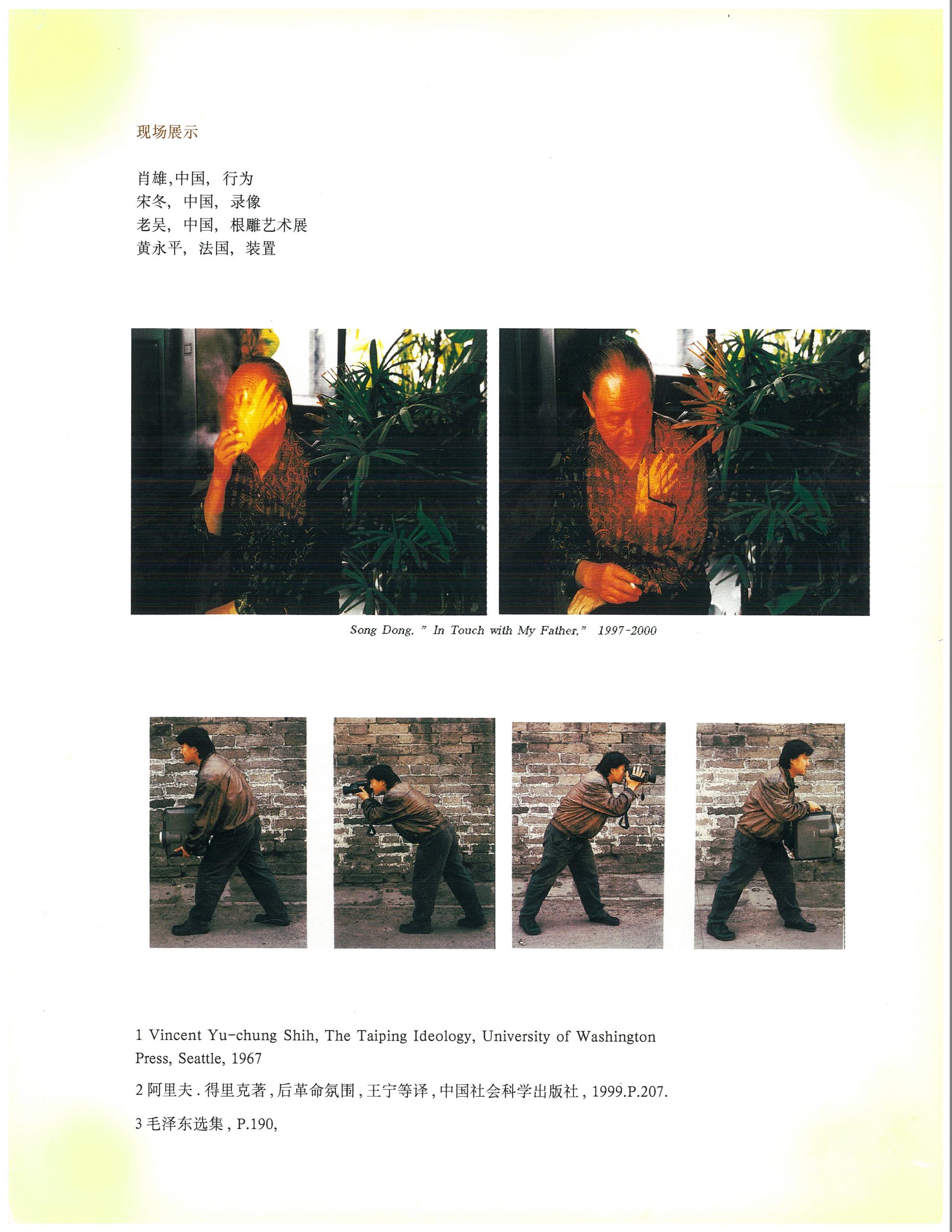
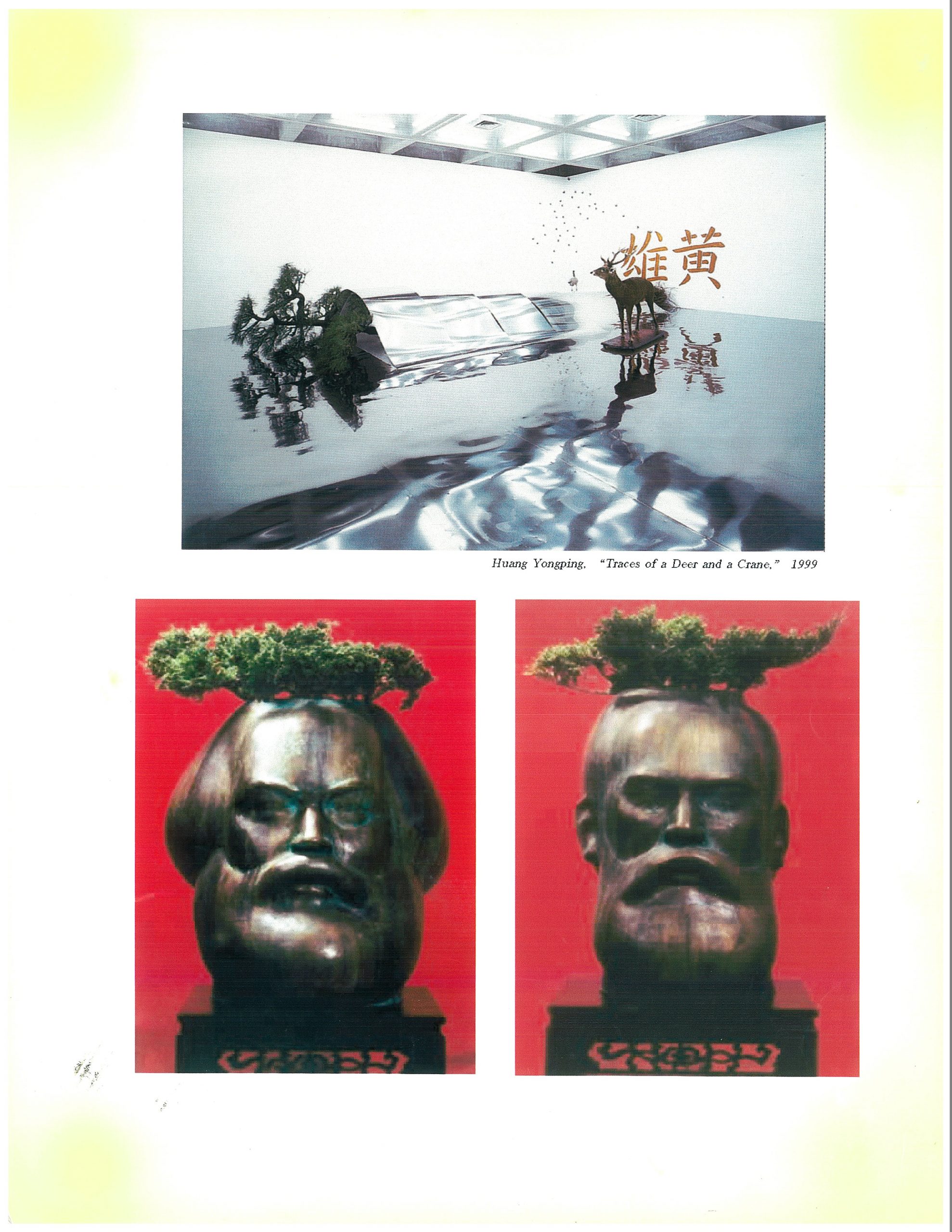


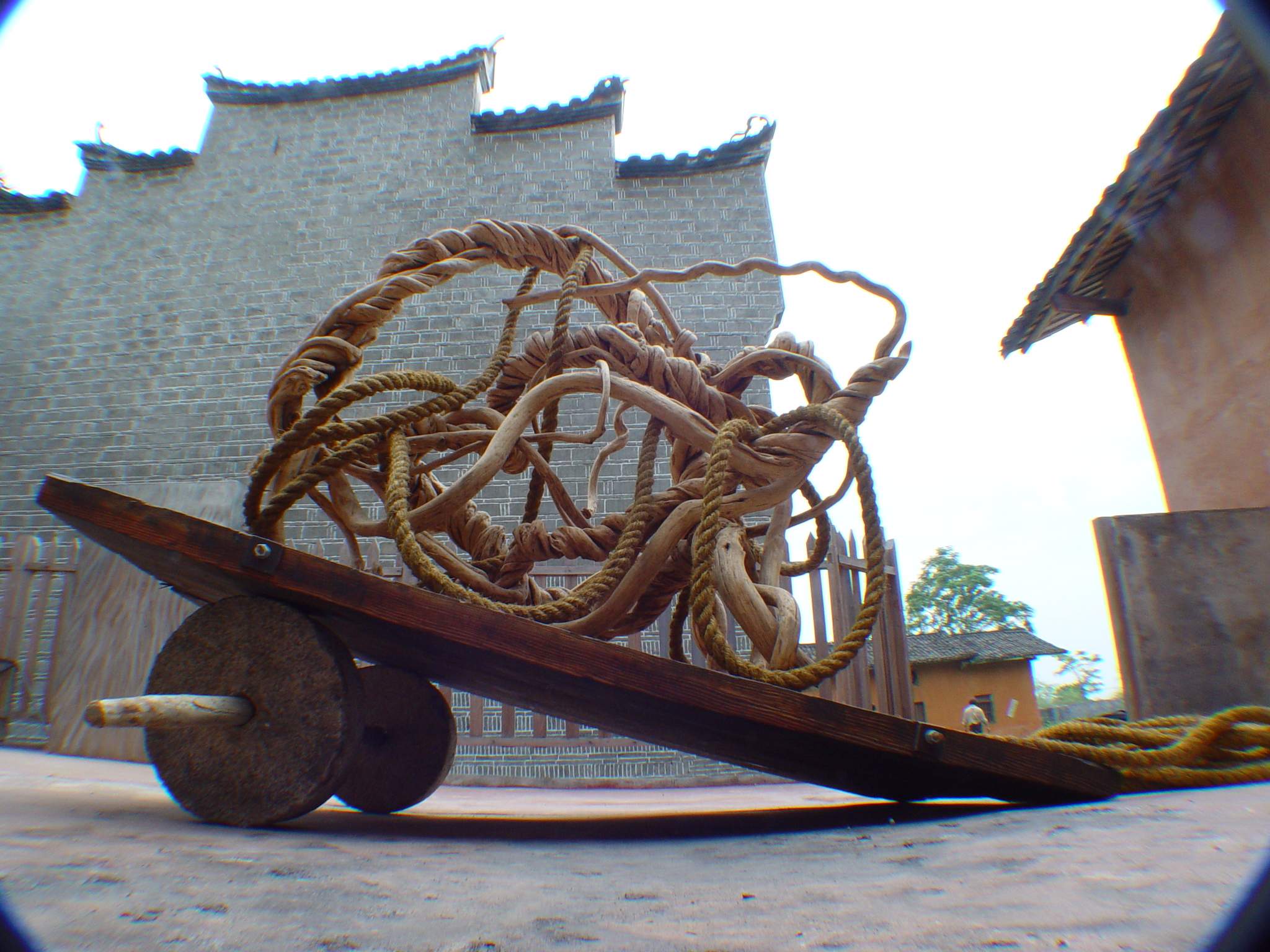
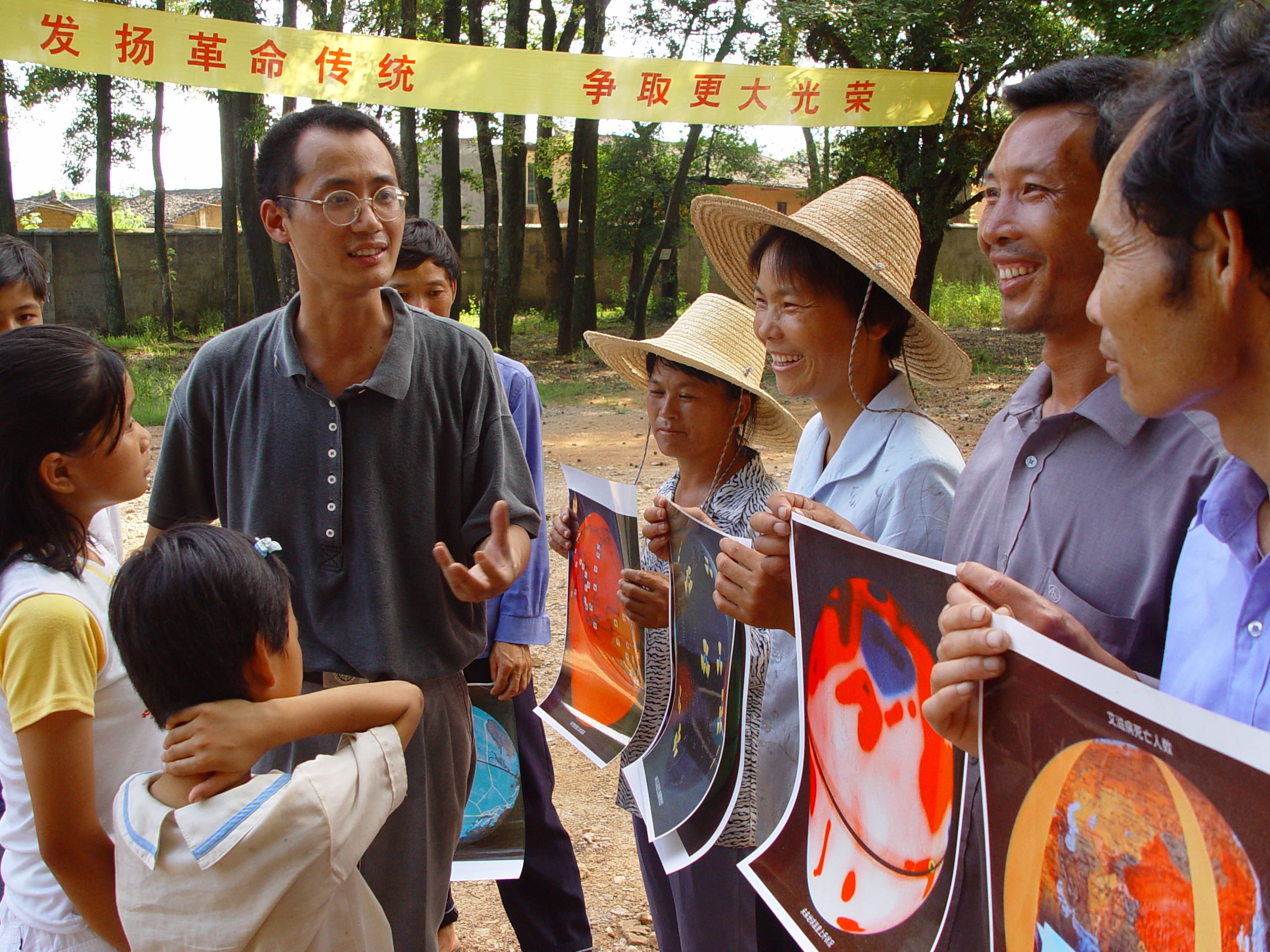
作品《难民共和国》展在原中华苏维埃中央临时政府前展出.jpg)
作品《难民共和国》展在原中华苏维埃中央临时政府前展出-2.jpg)
